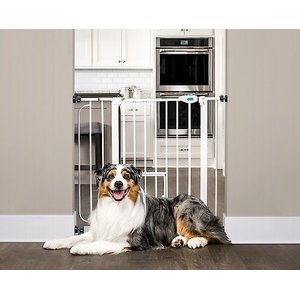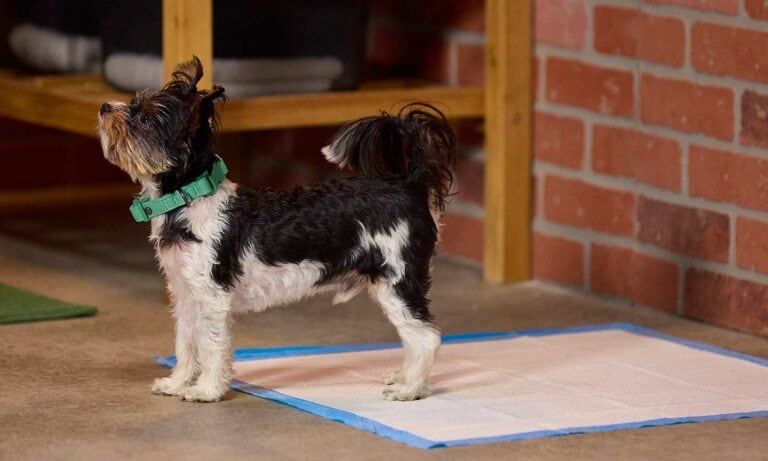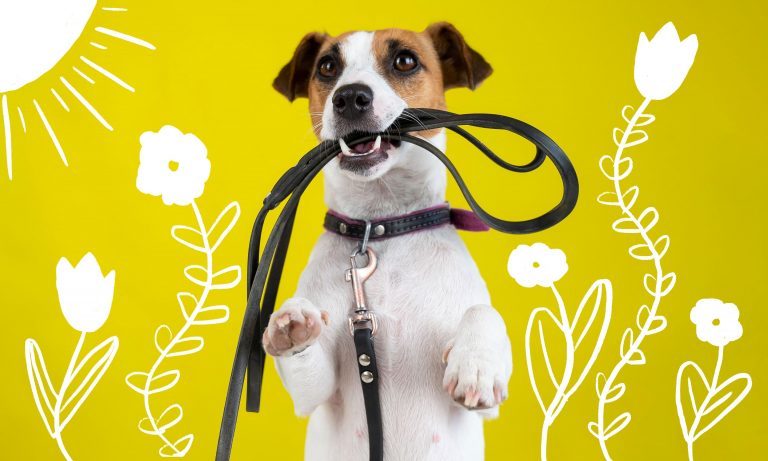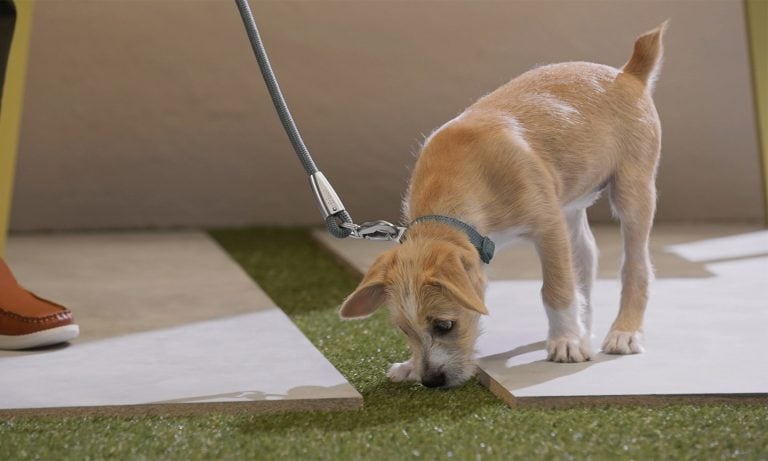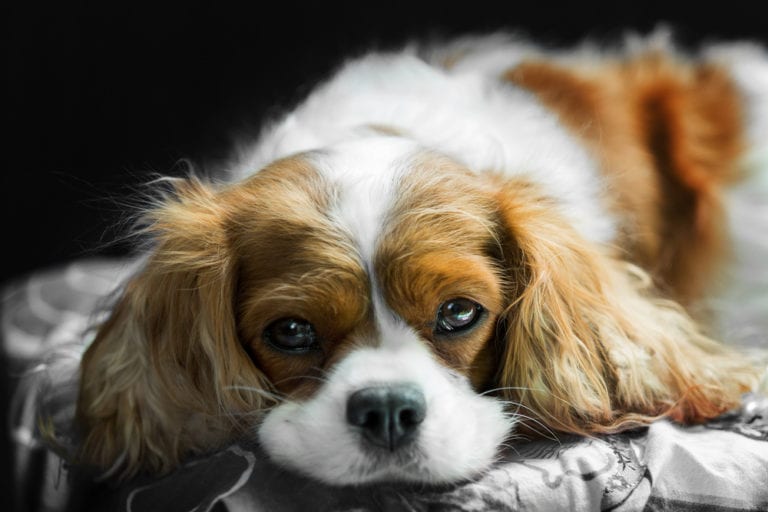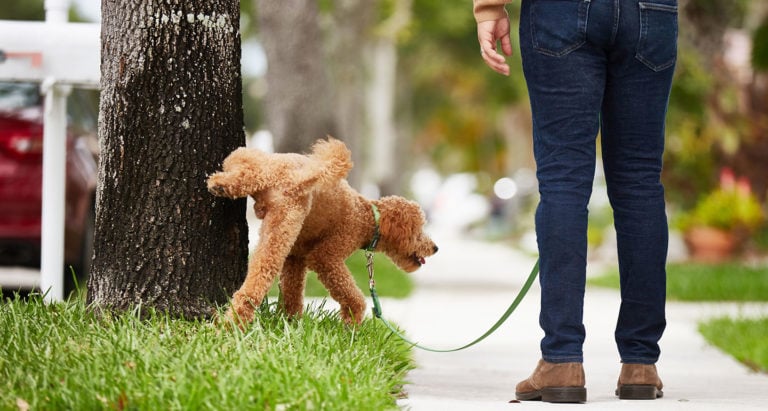If you’re one of those amazing individuals who adopted an older dog… or you’re helping your older pup age gracefully and with dignity, we applaud you. We know that older dogs can bring challenges you may not have expected. And one challenge is house training.
There are two main scenarios where you maybe be looking for help on how to potty train an older dog. The first is when you adopt an adult dog from a shelter or humane society, and the dog was not properly trained to begin with. The second is when your own dog is aging and suddenly struggling to pee or poop outside.
Either way, we understand that you need help. You may have arrived here with the thought, “How do you train an older dog not to pee in the house? Like, right now?” Here, you’ll find tips and answers to the most common questions about house training an older dog, with or without a crate.
Why You Should Potty Train An Older Dog
Before creating a plan for potty training an older dog it’s important that you speak with your pet’s regular vet. House training issues might stem from a medical condition which could need to be addressed. We spoke with Dr. Julie Buzby, DVM, CAVCA, CVA, has been a veterinarian for 26 years and specializes in health and behavior issues with older dogs. Some things to consider:
- If you adopted an older dog and assumed he or she wasn't housebroken, unless you had a specific history that your adopted dog had never lived indoors, urinary or defecation accidents could be an indication of a medical condition before a training or behavioral problem. Says Dr. Buzby, “I’d be looking for Diabetes mellitus, Cushing's disease and/or a chronic urinary tract infection (UTI) in a senior dog before assuming the dog was not housebroken. “
- Secondly, dogs can seem to "lose" their house training simply because they don't have the mobility to get up or get to the door and therefore have more accidents. Incidentally, this can be as distressing to the dog as it is to you and your family. So, mobility needs to be factored into the equation/interpretation of house soiling too.”
Once you have worked through any medical considerations with your vet and found the problem still persists, it’s time to think about behavioral issues that are causing potty problems for your older dog.
More about why your older dog might be peeing in the house.
Can an older dog still be potty trained?
Wondering if your old dog can learn some new tricks? Yes, as long as you know what you’re dealing with according to Irith Bloom, a faculty member at Victoria Stillwell Academy and a certified animal trainer, who is the director of training at The Sophisticated Dog, a Los Angeles-based pet training company.
Once you have a clear picture of any health issues and how to solve them, it’s time to consider seeking help from a professional dog trainer for the quickest path to success. Bloom says, “Learning how to house train an older dog can be both more and less challenging than potty training a puppy. Older dogs who don’t have a history of house training have a strong habit of pottying wherever and whenever they want, so they can find it difficult to understand why the rules are suddenly changing.
Also, even an older, well-trained dog may be confused about how house training works outside your home. If you’ve recently moved or your dog is pottying in other people’s houses, your dog may think that the rule is not to potty in your house, and not understand that the rule is that the bathroom is outdoors only.”
How Do I Potty Train An Older Dog?
Bloom offers the following guidelines for potty training older dogs. They work with dogs who have never been properly house trained and with dogs who need to be house trained in a new home. These guidelines also work with older dogs who need to be re-trained for medical reasons (as the medical issue is being treated).
- Set up a space to confine your older dog between potty breaks, to avoid accidents around the house: If your dog is crate trained, you can use a Frisco Fold & Carry Double Door Dog Crate or a Frisco Indoor & Outdoor Soft Dog Crate for up to four hours in a row. This may take some time to get used to, and it will help if the space is comfy with toys and a chew treat.
If your mission is house training an older dog without a crate—you can use the Carlson Pet Products Extra Wide Walk-Thru Gate, the MidWest Steel Pet Gate or the Frisco Dog Exercise Pen to block off a small room, such as the kitchen or bathroom (tile is easier to clean in case of accidents), or create a free-standing confinement area. Keep your dog in this space any time you’re not supervising them. Please do not leave your dog outside or in a cold garage. Your dog’s non-crate confinement space should be inside your home.
- Clean up accidents properly: Irith Bloom advises, “The odor from past accidents is like a ‘restroom’ sign for your dog. Clean accidents thoroughly using a cleaner designed for pet stains, such as Nature’s Miracle Dog Stain and Odor Remover Spray. I recommend getting on your hands and knees and sniffing the area after you clean it to make sure the smell is truly gone. (Yes, I do this, and yes, my clients think it’s a bit odd—but you’d be amazed how many “missed” pee spots I’ve found!)”
- Create a “legal bathroom” for your dog: “If your dog must be left alone longer than they can hold it, it’s important to give them a legal bathroom,” advises Ms. Bloom. “Wee Wee pads and other best dog diapers give your dog a better option than the floor for times when they’re gated or crated for too long, or if your dog has trouble holding it in general.” Find out more about training your dog to use dog pee pads here.
5-Step Plan for Potty Training Older Dogs
Here is Bloom's 5-step plan for successfully pottying training older dogs.
- Take your dog out side to potty at least once every hour. Stand with your dog in an appropriate potty area. Act boring (so you don’t distract your dog from pottying) and wait five minutes to see if they relieve themselves. Praise and offer a treat as soon as they do. If the dog does not potty within five minutes, take the dog back to the confinement area for 10 to 15 minutes and then take them out again. Repeat until the dog potties outside.”
- Set up a space to confine your older dog between potty breaks, to avoid accidents around the house. After the dog does their business, stay outdoors! If you go back indoors right away, your dog will learn that pottying ends fun outdoor time, and they may hold it longer so they can stay outside longer. Spend at least 10 minutes outdoors after your dog relieves themselves, so your dog learns pottying quickly earns extra fun time outside.
- Provide limited supervised playtime after you go indoors. After the dog potties and you go back indoors, give them up to 15 minutes supervised time indoors before returning them to their confined space, so they don’t associate doing their business outside with being immediately crated or gated afterward.
- Repeat these steps throughout the day. Take your dog out once every hour when you’re home, giving them praise and treats and extra outdoor time for pottying, followed by limited supervised time indoors before returning to confinement. Due to these frequent potty breaks, it’s best to start training over the weekend or when you know you’ll be home for a few subsequent days. When you’re not around, you can confine your dog for up to four hours during the training process and hire a dog walker to let them out for a potty break when you’ll be away for longer than that. Be sure the dog walker is aware of and understands your house-training routine.
- Track their potty patterns. Create a house-training chart or use a notepad to track when and where your dog potties, so you can learn their patterns. This information will help you learn which times of day your dog most likely needs to go, and when they probably don’t need a potty break.
How Long Does It Take?
The stricter you are about following the routine outlined above, and the more often you can take your dog out, the faster your dog will learn. Ms. Bloom advises, “Some dogs learn in a single weekend, while others can take weeks or even months to get the hang of things. Patience is key.”
A few final take-aways to remember:
- When learning how to potty train an older dog, accidents will happen. If you see your dog having an accident, calmly take them outside, and then praise and offer a treat for going in the right place. Fight the urge to yell or scold! Yelling and scolding teaches dogs to pee and poop where you can’t see them. In other words, they won’t stop going in the house; they’ll just hide before they do their business.
- Having an older dog who isn’t house trained is frustrating, but most older dogs can be potty trained within a couple of weeks. If you keep records of your dog’s bathroom habits, you can quickly get to just a few potty breaks a day.
- For the fastest results, start with frequent potty breaks, take good notes and make sure that every time your dog does their business outside, they are rewarded with praise, treats and fun!
Learn More About Crate Training Older Dogs
Read More
Share:


